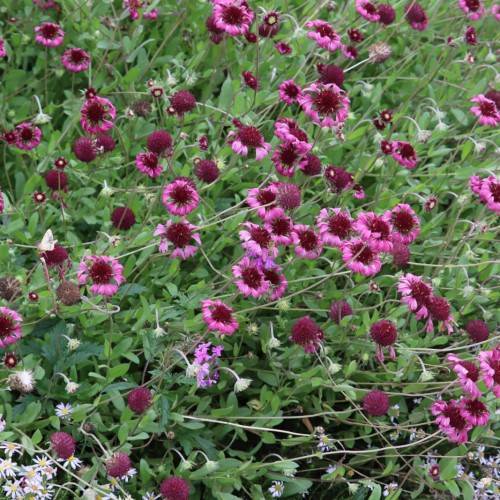
pincushion flower
Scabiosa atropurpurea 'Beaujolais Bonnets'
Cycle:
Herbaceous Perennial
Watering:
Average
Hardiness Zone:
Flowers:
Flowers
Sun:
Full sun
Leaf:
Yes
Growth Rate:
Low
Maintenance:
Low
Drought Tolerant:
Yes
Care Level:
Medium
watering
The pincushion flower (Scabiosa atropurpurea 'Beaujolais Bonnets') requires regular watering, but it should not be overwatered. To ensure that this plant gets enough water, water it once a week in the morning. Make sure to water just enough that the soil is moist, but not soggy; about 1 to 2 cups of water per plant is typically enough. During times of extreme heat, such as during the summer months, you may need to water the plant more frequently, about twice a week. During periods of cooler weather and fewer hours of sunlight, you may need to water the pincushion flower less often. Keep in mind that the soil should not be allowed to completely dry out between waterings.
sunlight
Pincushion flower (Scabiosa atropurpurea 'Beaujolais Bonnets') requires full to partial sunlight. If grown outdoors, aim to provide around 6-8 hours of direct sunlight, preferably in the morning to help the flowers produce the richest, most vibrant colours. Plants grown in shade or indoors will remain compact and reduce flowering amount. Providing at least 4-5 hours of direct light will ensure blooms occur, but the colour may be paler than those grown in full sun.
pruning
Pincushion flower (Scabiosa atropurpurea 'Beaujolais Bonnets') should be pruned twice a year, in early spring and late summer. In the early spring, prune off any dead or damaged stems and leaves. Cut back by a third, removing any stems that have too many flowers that may be crossing and crowding each other. This will help to create an attractive, bushier plant. In late summer, cut back by a third again, removing any flower stalks that have bloomed as well as those that appear to be overcrowded. Pruning in late summer will help to promote bushiness and a second flush of flowers in late fall.
